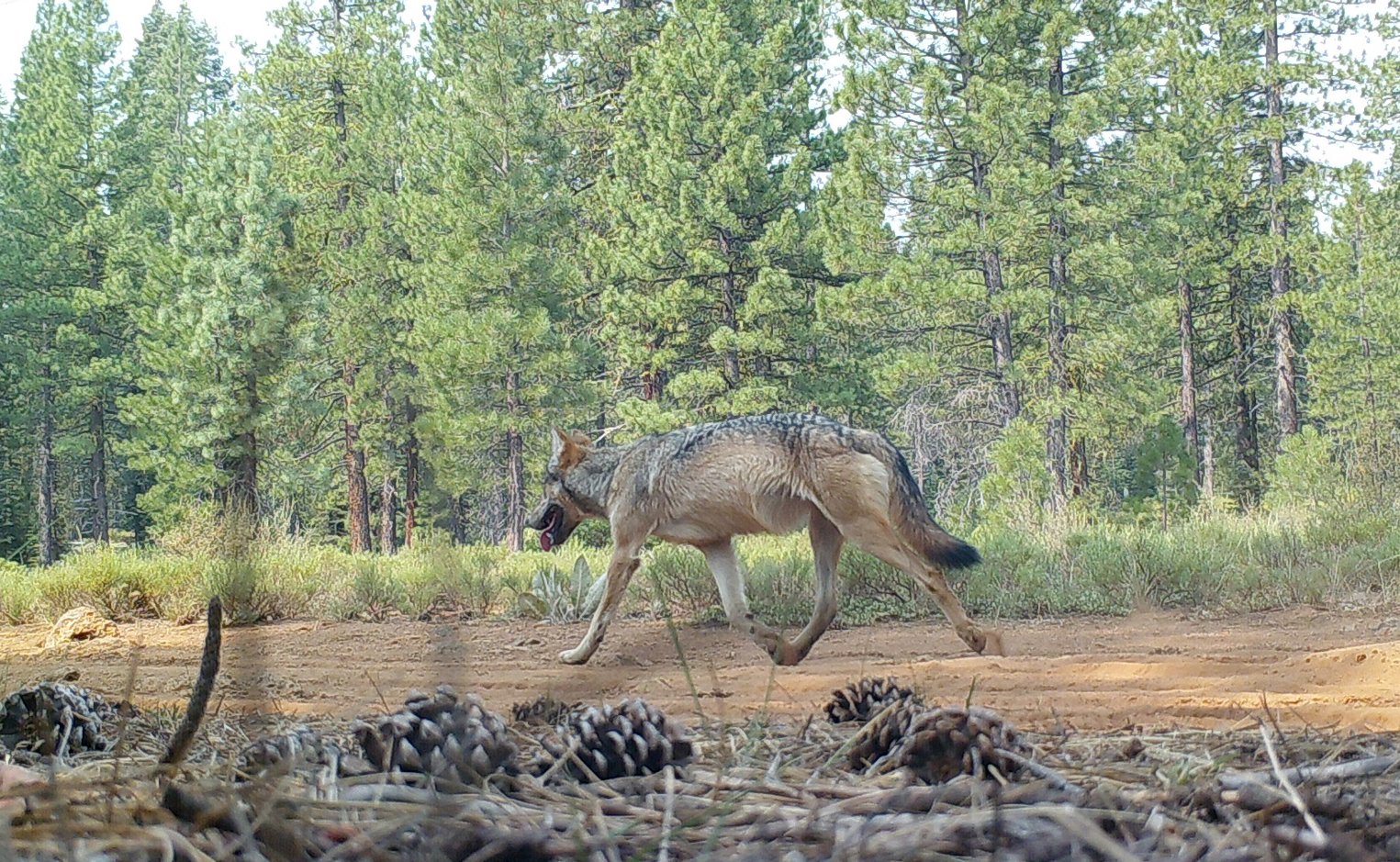Officials with the California Department of Fish and Wildlife have confirmed the discovery of a new pack of gray wolves in the Sierra Valley, which lies northeast of Sacramento. Wolf growth has been rampant across the Golden State this year; at least 30 new pups were born in California in 2024 alone, marking the largest single-year population increase in a century, officials say.
The “Diamond Pack” is California’s ninth known pack, after migrating wolves from Oregon began repopulating the state in 2011. Before then, gray wolves had been extirpated from the state since the 1920s. The Diamond Pack currently consists of a single male-female pair that officials expect to mate and produce offspring soon. The female dispersed from the Lassen Pack, and the male was previously unknown to researchers. The two have been traveling together for at least six months.
The other two packs discovered in 2024 include a to-be-named pack of four wolves living in the northern reaches of Lassen National Forest (not to be confused with the already established Lassen Pack, whose territory is further south in the same national forest) and the Antelope Pack, another new male-female pair that also runs in the Sierra Nevada Valley near the Diamond Pack’s known territory.
Gray wolves in California are on both the federal and state endangered species lists. As CDFW gray wolf coordinator Alex Hunnicutt points out, wolves are continuing a steady southward march from their more northern origins in the Pacific Northwest. California wolves have shown up within 10 miles of Reno in the past, and the male-female pair in the Diamond Pack has also been known to travel near the Nevada state line.
While their natural repopulation is a cause for celebration for many stakeholders, it also comes with cause for concern among the state’s livestock producers and many hunters. Fourteen confirmed wolf depredations on livestock have occurred since August, including five in Plumas County, five in Siskiyou County, three in Lassen County, and one in Tulare County. (Tulare County was also home to one “probable wolf” depredation and one “non-depredation,” or non-deadly wolf-livestock encounter, in that timeframe.)
“Obviously we don’t want to undercut that wolves are a conservation success,” Kirk Wilbur, vice president of government affairs for the California Cattlemen’s Association, told the San Francisco Chronicle. “But it’s important for people to know that as the population [of wolves] increases, we see a similar increase in the rate that cattle, sheep and other animals are killed by those wolves.”
Read Next: Colorado Wolf Pack Captured and Relocated to “Secure Enclosure” Following Conflicts with Ranchers
The discovery comes just weeks after CDFW announced a new partnership with the University of California at Berkeley’s Rausser College of Natural Resources, called the California Wolf Project. The group aims to better understand the “economic, ecological, and social impacts of wolf recolonization in the state,” according to Hunnicutt.
“It is exciting to see wolves back in California, but there are a lot of questions about where they fit amongst a rapidly changing landscape with new challenges for agencies and livestock producers,” said UC Berkeley wildlife management professor and CAWP co-lead Arthur Middleton. “We hope our growing team can provide new support to those interested in and impacted by the state’s growing wolf population.”
Read the full article here
